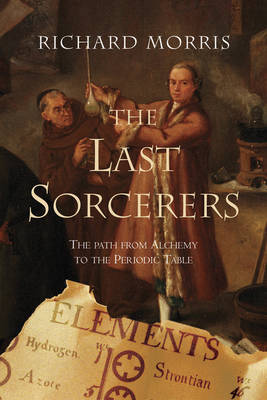They started with four: earth, air, fire, and water. From these basics, they sought to understand the essential ingredients of the world. Those who could see further, those who understood that the four were just the beginning, were the last sorcerers — and the world's first chemists.What we now call chemistry began in the fiery cauldrons of mystics and sorcerers seeking not to make a better world through science, but rather to make themselves richer through magic formulas and con games. But among these early magicians, frauds, and con artists were a few far-seeing "alchemists" who, through rigorous experimentation, transformed mysticism into science.
By the 18th century the building blocks of nature, the elements of which all matter is composed, were on the verge of being discovery. Initially, it was not easy to determine whether a substance really was an element. Was water just water, plain and simple? Or could it be the sum of other (unknown and maybe unknowable) parts? And if water was made up of other substances, how could it be broken down into discreet, fundamental, and measurable components?
Scientific historians generally credit the great 18th century French chemist Antoine Lavoisier with addressing these fundamental questions and ultimately modernizing the field of chemistry. Through his meticulous and precise work this chaotic new field of scientific inquiry was given order. Exacting by nature, Lavoisier painstakingly set about performing experiments that would provide lasting and verifiable proofs of various chemical theories. Unfortunately, the outspoken Lavoisier eventually lost his head in the Terror, but others would follow his lead, carefully examining, measuring, and recording their findings.
As the field slowly progressed, another pioneer was to emerged almost 100 years later. Dimitri Mendeleev, an eccentric genius who cut his flowing hair and beard but once a year, sought to answer the most pressing questions that remained to chemists: Why did some elements have properties that resembled those of others? Were there certain natural groups of elements? And, if so, how many, and what elements fit into them? It was Mendeleev who finally addressed all these issues when he constructed the first Periodic Table in the late 1800s.
But between and after Lavoisier and Mendeleev were a host of other colorful, brilliant scientists who made their mark on the field of chemistry. Depicting the lively careers of these scientists and their contributions while carefully deconstructing the history and the science, author Richard Morris skillfully brings it all to life. Hailed by Kirkus Reviews as a "clear and lively writer with a penchant for down-to-earth examples" Morris's gift for explanation — and pure entertainment — is abundantly obvious. Taking a cue from the great chemists themselves, Morris has brewed up a potent combination of the alluringly obscure and the historically momentous, spiked with just the right dose of quirky and ribald detail to deliver a magical brew of history, science, and personalities.
Table of Contents
- Front Matter
- 1. The Four Elements
- 2. Prelude tothe Birth of Chemistry
- 3. The Sceptical Chymist
- 4. The Discovery of the Elements
- 5. The Nail for the Coffin
- 6. "Only an Instant to Cut Off That Head"
- 7. The Atom
- 8. Problems with Atoms
- 9. The Periodic Law
- 10. Deciphering the Atom
- Epilogue: The Continuing Search
- Appendix A: A Catalog of the Elements
- Further Reading
- Index
- ISBN10 0309095077
- ISBN13 9780309095075
- Publish Date 10 November 2003
- Publish Status Active
- Out of Print 1 April 2022
- Publish Country US
- Imprint Joseph Henry Press
- Format Paperback
- Pages 294
- Language English
